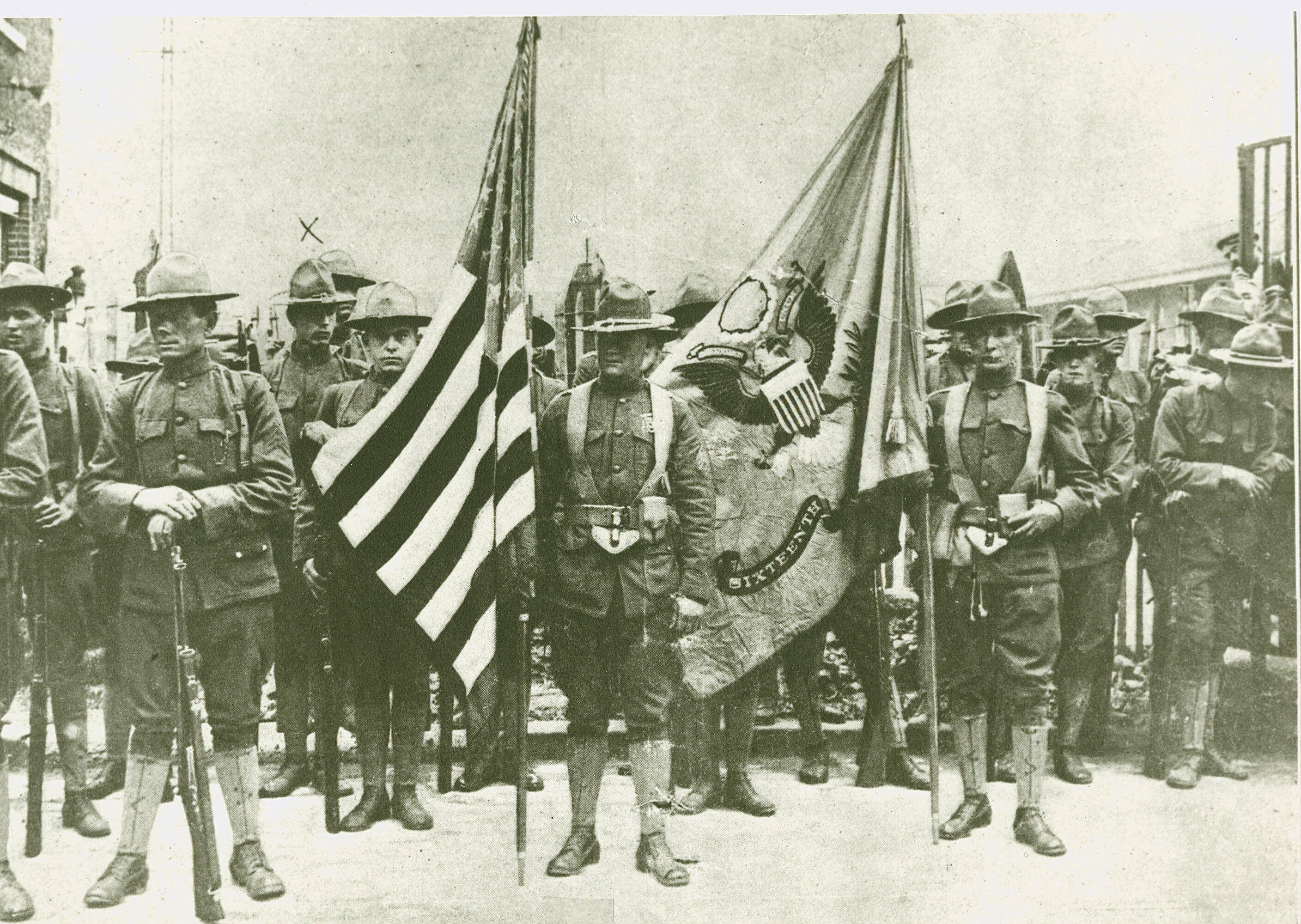On April 2, 1917, President Woodrow Wilson asked Congress for a declaration of war against Germany. On April 6, Congress granted the request and the United States was formally at war with Germany. Several key events leading up to this act included the sinking of the Lusitania in 1915, and the Zimmerman Telegram sent to Mexico by Germany in January 1917. The resumption of unrestricted submarine warfare by Germany on February 1, 1917 was the key event that turned the American public from neutral ground at home to the trenches of Europe.
The task of training, supplying and transporting the U.S. forces was one that the Army had to create and maintain. General John J. Pershing was put in command of U.S. forces in Europe, the American Expeditionary Force (AEF) and he requested that they stay intact and not fill gaps in French and British trenches. He sailed to France with elements of the first American forces, the First Expeditionary Division. This group changed its name in July 1917 to the 1st Infantry Division and formed the basis of the AEF.
The 1st Infantry Division was mobilized in May 1917 and the first official U.S. troops, part of the 28th Regiment, landed in St. Nazaire, France on June 26, 1917. After being trained by the French in trench warfare tactics and the 75mm French artillery gun parts of the 1st Division held the line in the Somerville Sector on the Lorraine Front in late October. The first American-manned artillery gun fired a shell on 23 October by Battery C, 6th Field Artillery. The 18th Infantry captured the first prisoner taken by American forces on October 27, and on the night of November 2, the Germans raided the American trenches after an artillery barrage and captured 11 Americans. The first official deaths were during this raid as well. Private Thomas F. Enright, Private Merle D. Hay and Corporal James B. Gresham were laid to rest in Bathelemont with full honors. One soldier, named Donald D. Kyler, was assigned to the 16th Infantry Regiment before the division came to France. In his memoirs he gives great details into his training, weapons, trenches, fighting and his experience in the war. His company was to the left of the German raid that night.
By January 1918, the rest of the division was ready to line the parapets and was sent to the Ansauville Sector, near Toul. In April the division was moved to the Cantigny Sector where the division would soon help liberate the town in the first all American operation. The attack was staged for the early morning of 28 May 28, 1918. The 28th Infantry Regiment led the attack. Kyler mentions that regiment was sent to the rear to train for the attack. His regiment took over for the 28th Infantry a few days after they captured Cantigny. After multiple campaigns for the rest of the war, including occupation duty, the majority of the 1st Division returned to the U.S. in August and September 1919. Even now the Fighting First is still fighting.








Social Sharing